In August of this year, GN Hearing released its latest hearing aid technology: ReSound ONE. The new hearing aids not only boast improvements over the previous Quattro family of devices, but for the first time ever in a hearing aid, the company added an additional microphone onto the receiver itself, calling it a Microphone & Receiver-In-Ear (M&RIE) design.
By placing a microphone in the canal itself the M&RIE is said to be able to take advantage of the user’s unique ear shape to customize the sound beyond what has typically been possible.
At the time of launch, we had the opportunity to connect with Dr. Laurel Christensen, Chief Audiology Officer at ReSound, to discuss the new technology. She told us that she believes the M&RIE technology is truly an industry game changer.
Because the new design keeps all the benefits of the most popular hearing aid style today, the receiver-in-canal style – which includes good cosmetics and an open fitting that eliminates occlusion – the new M&RIE “gives each individual hearing aid user back their own ear acoustics that are lost with the microphones placed above the ear,” said Dr. Christensen. “Every listener hears differently depending on the shape of their own ear and using the M&RIE, the hearing aid user is able to listen with their own ear acoustics which dramatically impacts sound quality.”
First Impressions
A couple months after launch, we were able to get our hands on a pair of rechargeable ReSound ONE 9 devices with the new M&RIE receivers to demo (the aids are also available in a 312 and 13 size battery power configurations).
The hearing aid design itself is a departure from previous ReSound aids, taking a somewhat more angular shape when compared with Quattro and other earlier ReSound receiver-in-canal (RIC) devices.
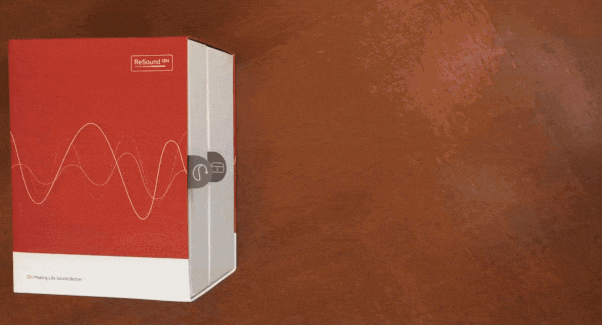
Unboxing new ReSound ONE hearing aids
With the new ONE hearing aids, at the 7 and 9 technology level, you can use either the standard style receivers, available in different power levels, or the M&RIE style. The severity of hearing loss will dictate whether or not the M&RIE receivers are the best option when choosing the new ONE hearing aids. If you opt for 5 level technology, for example, the M&RIE option is not available.
Both versions of the receivers – standard style and M&RIE, have been completely redesigned compared to the past few generations of ReSound’s RIC style hearing aids.
As shown in the image below, the M&RIE style receiver has an extra “hump” protrusion to accommodate placement of the additional microphone.

Left: A breakdown of the M&RIE components. Right: Comparison of standard style (top) and M&RIE (bottom) ReSound ONE receivers.
Consequently, the new receiver design also has led to new domes, as the fitting is different than the previous design.
In addition to the open, tulip and power styles, ReSound has introduced a new type of closed dome, which offers the ability to keep more sound in the ear without the same level of occlusion typically found with power domes. (overview of dome options can be viewed here)
Good Fit and Sound
The hearing aids themselves fit easily and comfortably over the ear, and the contour of the new receiver design arguably sits better on the ear compared with the previous design used in the Quattro and 3D models, slightly further back on the ear.
Sound quality was found to be what one would expect from a premium hearing instrument, with a notably quiet circuit.
The lack of significantly audible circuit noise, according to Dr. Christensen, is due to the fact that expansion (a feature used to reduce audibility of low-level noise) is set for each individual hearing loss. This way, expansion is activated for those that might hear some internal noise, further reducing this noise.
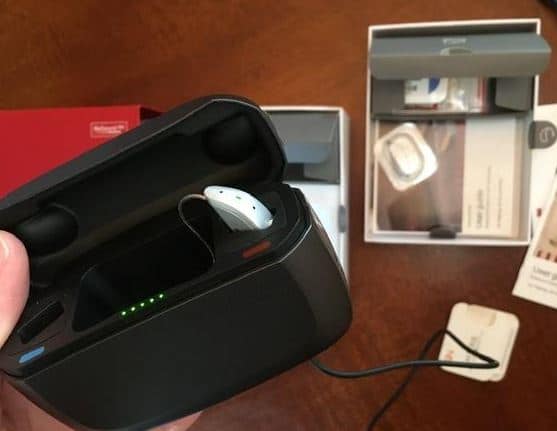
Charging case
Placing the new ONEs in the ‘premium’ charger that accompanied the aids, which is almost identical to the previous Quattro charger, is simple and the indicator lights help guide you on how much charge is in the devices. A flashing green light on the hearing aid itself tells you that your device is engaged and charging when it’s in the case.
The premium charger offers the ability to recharge the hearing aids fully 3 times without the need for electricity.
ReSound also now has a ‘standard’ charger, which charges the devices, but doesn’t include the built-in battery.
New Features and App Upgrades
The company’s All Access Directionality is designed to automatically adjust the directional microphone patterns based on the environment and still monitor the sounds around them. In noisier situations, All Access Directionality utilizes the company’s new binaural connection (via NFMi) to create a stronger, more focused beam for sounds in front.
Another recent addition, exclusive to the ONE, is the newly launched Face Mask program. This new program is designed to help compensate for the speech frequencies muffled by face masks, and can be added to the hearing aid program list. The new program can even be added remotely by the hearing professional, using the company’s ReSound Assist Live telehealth platform.
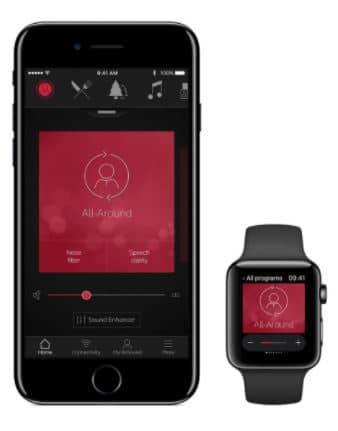
ReSound Smart 3D App.
A new Ultra Focus setting is now available in the company’s Smart 3D app. This is a user-activated feature through the app that allows you to narrow the focus of the microphones in front towards a person speaking.
We found this new Ultra Focus feature to be quite effective at focusing on the speaker in front, while also not substantially reducing audibility from around the wearer.
According to the company, the Ultra Focus setting is achieved by “using the speech frequencies for targeted directionality and the high and low frequencies to monitor the environment, they can hear speech and still maintain spatial cues from the sides and back”.
Like the Quattro before it, the ReSound ONE offers direct audio streaming capability to iPhone and select Android devices.
According to the company, a single charge of 3 hours provides an industry leading 30 hours of use, offering up to 25 hours even with a full day of audio streaming.
Verdict
With a new sound processing chipset, and an entirely new look and design, the feature-rich ReSound ONE hearing aids have a lot to offer.
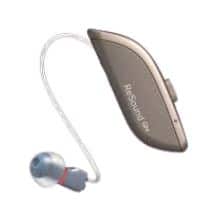 The optional M&RIE receivers, while they aren’t suitable for all degrees of hearing loss, provide a unique way to customize the sound experience unlike any other hearing aid and may help improve a user’s spatial awareness (localization) to sound.
The optional M&RIE receivers, while they aren’t suitable for all degrees of hearing loss, provide a unique way to customize the sound experience unlike any other hearing aid and may help improve a user’s spatial awareness (localization) to sound.
Currently, the ONE is available in 3 level technologies: 5, 7 and 9.
Interested readers can visit ReSound’s website to learn more.



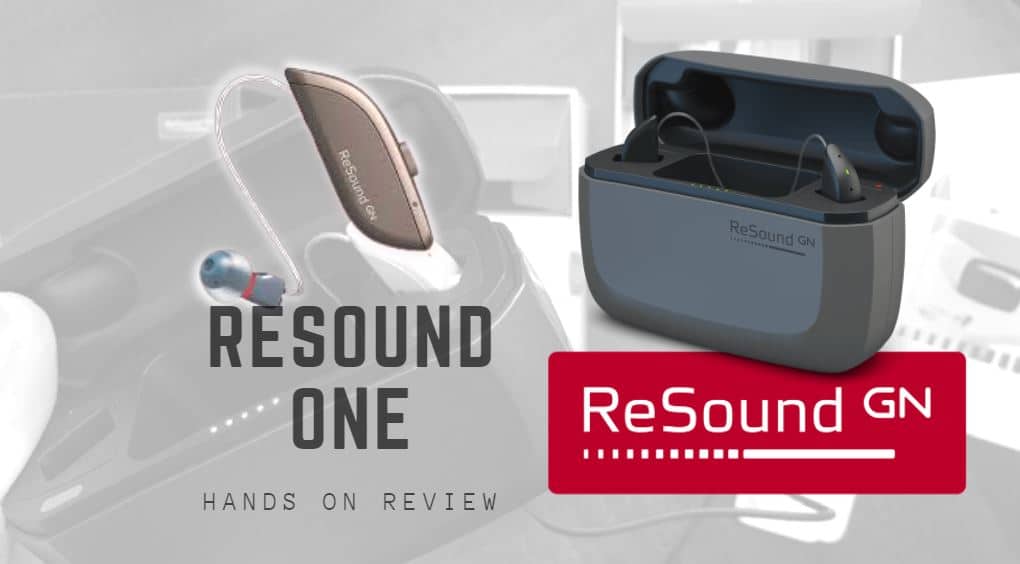



Does your earbud have air space for placing it in the ear, similar to the globe used today.